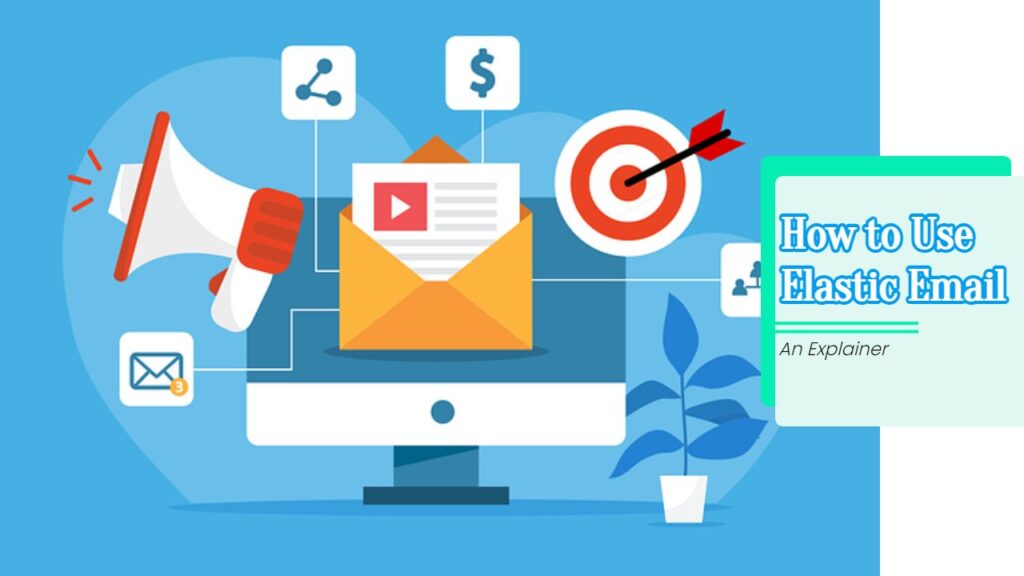Understanding Your Customer Base
Defining a Customer Base
A customer base is defined as an audience that purchases products or services from a business. It encompasses various segments, including potential customers, new customers, loyal and repeat customers, low lifetime value customers, and former customers. By understanding your customer base, you can implement strategies to strengthen relationships and boost sales, which ultimately supports stable growth. For startups, growing your customer base is particularly critical during their early stages and across different funding rounds, applying a customer-centric growth strategy to foster development throughout all business phases (Zendesk).
| Customer Base Segment | Description |
|---|---|
| Potential Customers | Individuals who have shown interest but have not yet made a purchase. |
| New Customers | Individuals who have recently made their first purchase. |
| Loyal and Repeat Customers | Customers who consistently return for more purchases. |
| Low Lifetime Value Customers | Customers who make low-value purchases, leading to a lesser overall impact on revenue. |
| Former Customers | Individuals who previously purchased but have since stopped. |
Importance of Customer Base Analysis
Customer base analysis is crucial for several reasons:
Identifying Trends: By analyzing your current customer data, you can identify purchasing patterns and preferences, allowing you to refine your offerings.
Market Understanding: Insights from your existing customers provide valuable information about your target market. This includes demographic, psychographic, and behavioral details, which are essential for crafting customer profiles and enhancing your marketing strategies (Zendesk).
Competitive Advantage: Examining the client bases of your competitors can reveal gaps in your market approach and opportunities for differentiation.
Personalized Experiences: Customers today expect personalized interactions. Research shows that 72% of customers value recognition and understanding of their preferences (SuperOffice). Leveraging customer data analytics enables you to create tailored experiences that foster loyalty and repeat purchases.
Performance Measurement: Establishing key performance indicators (KPIs) for customer satisfaction helps assess the impact of customer engagement on your business performance. Common KPIs include customer satisfaction scores, response times, Net Promoter Scores, and customer retention rates.
By investing in customer base analysis tools, you can lay the foundation for effective customer relationship management and targeted marketing strategies that enhance customer loyalty and acquisition (customer acquisition tactics, customer relationship management strategies).
Strategies for Growing Your Customer Base
Growing your business’s customer base requires a systematic approach that involves understanding your target market, current customers, competitors, and crafting detailed customer profiles. Below are effective strategies to enhance your customer base.
Target Market Identification
Identifying your target market is the initial step in expanding your customer base. A thorough target market analysis helps in recognizing the most valuable segments, assessing market viability, and aligning your products or services with customer needs (BigCommerce).
Key factors to consider when identifying your target market include:
- Demographics: Age, gender, income level, education, etc.
- Psychographics: Attitudes, interests, values, and lifestyle.
- Behavior: Buying patterns, product usage, and brand loyalty.
Creating a profile of your ideal customer will enable you to tailor your marketing efforts and communicate more effectively.
| Factor | Description |
|---|---|
| Demographics | Basic statistical data about your customers. |
| Psychographics | Insights into customer behavior and lifestyle preferences. |
| Behavioral | Information on product usage and purchasing decisions. |
Analyzing Current Customer Base
Once you identify your target market, analyzing your current customer base becomes essential. This analysis will help you spot trends and patterns in customer behavior, preferences, and demographics. Insights gained from customer analysis can enhance satisfaction, tailor messaging, and uncover potential market trends (Brandwatch).
Consider using customer demographics analysis tools to segment your existing customers effectively. This allows you to identify your most valuable customers and those who may need additional engagement or services.
| Analysis Type | Benefits |
|---|---|
| Demographic Analysis | Understand who your customers are. |
| Psychographic Analysis | Gain insights into why customers buy. |
| Behavioral Analysis | Discover what influences their purchasing decisions. |
Examining Competition’s Client Base
Understanding your competition is vital for effective market positioning. Analyzing competitors’ client bases can reveal valuable insights:
- Identifying who their customers are.
- Comparing strengths and weaknesses.
- Finding opportunities for differentiation (BigCommerce).
By studying competitors, you can adapt successful strategies they employ, determine gaps in the market, and better position your products to meet unaddressed customer needs.
Crafting Customer Profiles
Creating detailed customer profiles or buyer personas is an influential way to direct your marketing efforts. These profiles should combine demographic, psychographic, and behavioral insights gathered from your analysis.
Your customer profile might include:
- Name: A fictional name to make it relatable.
- Demographics: Key stats such as age, location, gender.
- Goals and Needs: What they want and how your product can help.
- Challenges: Pain points or issues they face that your product addresses.
Utilizing these profiles can refine your marketing strategy and message, ensuring that you are speaking directly to the needs and desires of your target audience. For further guidance, explore our resources on customer base segmentation.
Through these strategic actions, you can effectively grow your customer base while ensuring alignment with market needs and preferences. Each step contributes to a comprehensive growth strategy that can lead to lasting success for your business.
Customer Retention vs. Acquisition
Understanding the balance between customer acquisition and retention is crucial for maximizing your business’s success. While both strategies aim to grow your customer base, they entail different costs and benefits.
Cost of Acquiring New Customers
The cost of acquiring a new customer can be significantly higher than retaining an existing customer. In fact, it can be up to five times more expensive to capture a new customer compared to keeping a current one. This increased cost underscores the importance of focusing on customer retention strategies as well as customer acquisition efforts. As you explore ways to expand your customer base, it is essential to look into how customers currently use your products and engage them over time.
The following table summarizes the key costs associated with customer acquisition strategies versus retention efforts.
| Metric | Customer Acquisition | Customer Retention |
|---|---|---|
| Cost | Up to 5x higher than retention | Significantly lower cost |
| Focus | Attracting new customers | Engaging existing customers |
| Importance | Creating awareness | Building loyalty |
| Strategies | Target audience expansion | Improving customer loyalty |
To develop effective customer acquisition tactics, investing in analytics and personalization can make a significant difference.
Importance of Customer Retention
Customer retention is crucial for businesses aiming to build a sustainable and profitable relationship with their client base. Retaining customers results in higher lifetime value, increased loyalty, and consistent revenue streams. Businesses focusing on retaining existing customers typically incur lower costs and can create a more stable financial environment.
Establishing strong relationships with your customers can also enhance their overall experience. By fostering loyalty, you can turn satisfied customers into brand advocates who help with organic growth through referrals. Studies show that a significant percentage of customers expect personalized experiences. In fact, 72% of customers want acknowledgment of their individual preferences. Implementing robust customer relationship management strategies is therefore essential for enhancing retention rates.
Key performance indicators (KPIs) also play a role in assessing customer retention’s impact. Metrics such as customer satisfaction scores, Net Promoter Scores, and retention rates provide insight into customer loyalty and satisfaction. These indicators can help your business identify strengths and weaknesses in your engagement strategies (SuperOffice).
Investing in both customer retention methods and targeted acquisition campaigns ensures that you not only attract new customers but also create memorable experiences for your existing clientele. This dual approach will better position your business for long-term growth and success. For more insights into strategies for retaining customers, visit our section on retaining customer base.
Leveraging Data Analytics for Customer Base Growth
Benefits of Data Analytics
Data analytics serves as a vital tool for driving growth in your customer base. The benefits are numerous, enabling informed decisions that can enhance operational efficiency and strategic development.
Improved Decision-Making: Data analytics allows you to make faster, well-informed decisions. When companies leverage data, they can save costs, increase efficiency, and identify new opportunities based on reliable information (Penn LPS Online).
Targeted Strategies: By analyzing customer trends and behaviors, data analytics facilitates the creation of targeted strategies and marketing campaigns. This results in customized advertising that engages the right audiences, boosts brand loyalty, and encourages business growth (Penn LPS Online).
Operational Optimization: Businesses can identify and rectify inefficiencies within operations, reducing risks by optimizing products and services in alignment with customer feedback. This proactive approach helps in adjusting strategies and managing potential risks (Penn LPS Online).
New Opportunities: Understanding your target audience through data analytics can help you identify new product and service opportunities. By anticipating market gaps and tracking competitive activities, businesses can adapt their offerings to meet evolving consumer demands.
Effective Use of Data Analytics
Implementing data analytics effectively requires several strategic approaches:
Collect Relevant Data: Ensure that the data collected is relevant to your business objectives. This can include demographic data, purchasing patterns, and customer feedback.
Utilize Customer Base Analysis Tools: Implement robust customer base analysis tools to visualize data trends, which can provide you with actionable insights.
Segmentation Analysis: Conduct analysis to categorize customers based on their behaviors, preferences, and demographics. This helps in tailoring specific marketing strategies for different segments.
Monitor Performance: Regularly assess the performance of your marketing campaigns to determine their effectiveness. Adjust your strategies based on analytics insights.
Incorporate Personalized Experiences: As 68 percent of customers expect personalized experiences (BigCommerce), use analytics to create tailored experiences that resonate with your audience preferences.
By leveraging data analytics for customer base growth, you position your business for sustained success and adaptability in a competitive market. Utilize these tools to enhance your customer relationship management strategies and optimize growth opportunities. For more insights on nurturing your customer base, explore our articles on customer acquisition tactics and improving customer loyalty.
Tools for Customer Base Analysis
Understanding your customer base effectively requires various analytical tools. These tools can be categorized into distinct types of market research, which will help you derive insights that can drive business decisions and strategies. Below is an overview of essential market research types you can utilize to conduct thorough customer base analysis.
Qualitative Market Research
Qualitative market research involves collecting non-numerical data. This type of data is often more challenging to quantify but provides depth and context that numerical data cannot capture. You may gather insights through methods such as interviews, focus groups, and open-ended surveys. This research type helps you understand customer motivations, feelings, and behaviors, offering crucial qualitative insights that can augment your customer analysis strategies. For more details, visit Qualtrics.
Quantitative Market Research
Quantitative market research focuses on collecting numerical data that can be analyzed statistically. It is often easier to gather and analyze compared to qualitative data. This research type allows you to benchmark against historical data and identify trends through surveys with scaled responses or analyzing transactional data. Employing quantitative market research can yield actionable insights supported by facts and figures. For comprehensive information, refer to Qualtrics.
Customer Market Research
Customer market research emphasizes understanding the key influences on your target customers. It examines how your company can adapt its offerings or messaging to enhance sales. This analysis should involve identifying customer pain points, preferences, and buying behaviors, allowing you to align your products with market demands. More insights can be found at Qualtrics.
Competitor Market Research
Competitor market research provides a strategic overview of your competition. This involves analyzing their strengths, weaknesses, and overall market position in comparison to your organization. Understanding your rivals can help you identify opportunities for differentiation and highlight areas where you can enhance your competitive offering. For additional context, visit Qualtrics.
Product Market Research
Product market research is integral for assessing whether your products and services meet market needs. This research type entails evaluating the performance of your offerings, obtaining feedback from customers, and identifying potential improvements. Conducting thorough product market research ensures that you are launching a product that resonates with your target audience and performs optimally in the market. For more resources, check Qualtrics.
Utilizing these various market research tools allows you to gain a comprehensive understanding of your customer base, inform targeted strategies, and ultimately drive growth in your organization. Integrating these insights with customer relationship management strategies and customer acquisition tactics can further enhance your approach to developing a successful customer base.
Personalization and Customer Experience
Importance of Personalization
Personalization has become a crucial element in today’s competitive market. Properly gathering and analyzing customer data and feedback is key to personalizing experiences and addressing high expectations set by technological advancements in modern business (SuperOffice). In fact, 72% of customers expect individual recognition and understanding of their preferences.
Investing in gathering and analyzing customer data allows businesses to implement targeted marketing strategies that deliver tailored experiences. This approach not only increases customer satisfaction but also enhances loyalty, ultimately contributing to your company’s growth. Personalized interactions help build trust with your audience and foster long-term relationships.
| Benefits of Personalization | Impact on Business |
|---|---|
| Enhanced Customer Satisfaction | Loyal Customer Base |
| Increased Engagement Rates | Higher Conversion Rates |
| Tailored Marketing Strategies | Improved Brand Perception |
Impact of Customer Experience
The significance of customer experience cannot be overstated. Insufficient customer data can cause experience efforts to fall short, emphasizing the need for robust data collection and management (SuperOffice). Insights from customer analysis help businesses enhance customer satisfaction, target the right audience with tailored messages, uncover market trends, and make informed decisions.
A positive customer experience can drive business growth and success in a competitive marketplace. Leveraging technology like AI and automation is essential to understand and respond to customer behaviors and preferences, optimizing personalization and improving efficiency in customer service. Enhancing customer experience not only leads to elevated satisfaction but also ensures that your products and services provide practical solutions to consumer pain points, thereby addressing the needs and expectations of your target market.
| Aspects of Customer Experience | Outcomes for Businesses |
|---|---|
| Efficient Customer Service | Increased Retention Rates |
| Personalized Communication | Better Customer Insights |
| Seamless User Interactions | Enhanced Brand Loyalty |
By integrating effective customer base analysis tools into your strategy, you can successfully elevate personalization and customer experience efforts. For further insights, explore our articles on customer acquisition tactics and customer relationship management strategies for actionable tips and strategies to expand your customer base.
Enhancing Marketing Strategies
To effectively grow your customer base and increase engagement, you need to refine your marketing strategies. Two crucial approaches include implementing targeted marketing campaigns and customizing your advertisements to reach the right audience.
Targeted Marketing Campaigns
Targeted marketing campaigns focus on specific customer segments rather than a broad audience. By utilizing data analytics, you can identify trends and behaviors within your customer base, tailoring your marketing efforts accordingly. This method enhances the relevance of your messaging and increases the likelihood of engagement.
| Campaign Element | Description |
|---|---|
| Audience Segmentation | Grouping customers based on demographics, interests, and shopping behavior to create more relevant campaigns. |
| Data Sources | Utilizing transaction data, online behavior, and customer feedback to inform campaign strategies. |
| Campaign Goals | Defining objectives, such as increasing customer loyalty or boosting sales for specific products. |
Data analytics helps in optimizing campaign performance and ensuring effective communication with your target audience. Successful execution of targeted campaigns can lead to improved brand loyalty, as you engage customers with content that resonates with their preferences.
Customized Advertising
Customized advertising allows you to create tailored ads that speak directly to the needs and desires of your target market. By analyzing customer demographics, preferences, and past interactions, you can develop personalized messages that resonate deeply with individuals.
| Advertising Factor | Description |
|---|---|
| Messaging | Crafting messages that reflect the values and interests of specific customer segments. |
| Channels | Selecting appropriate platforms (social media, email, etc.) based on where your target audience spends their time. |
| Timing | Understanding when your audience is most likely to engage with your ads and adjusting your campaigns accordingly. |
The integration of technology, such as AI and automation, enables businesses to react to customer behaviors and preferences rapidly. This not only optimizes personalization efforts but also enhances overall customer experience. Customized advertising is critical to engaging the right audiences effectively, allowing for more efficient marketing efforts and fostering brand loyalty.
Incorporating these strategies into your overall marketing approach can significantly enhance your business’s ability to connect with customers and build a sustainable customer base. For further insights on how to enhance your marketing strategies, consider exploring customer acquisition tactics and customer relationship management strategies.
Implementing Customer Analysis
Understanding your customer base is pivotal for crafting effective marketing strategies. Two essential components of customer base analysis are the creation of buyer personas and customer segmentation analysis.
Buyer Personas Creation
Creating detailed buyer personas allows you to tailor your marketing strategies to the preferences and expectations of your ideal customers. A buyer persona is a semi-fictional representation of your best customers based on real data and market research. Organizations use buyer personas to align their marketing approaches with customer needs, garnering better engagement and conversions.
To effectively construct buyer personas, follow these steps:
- Research Your Audience: Collect data from surveys, customer interviews, and feedback.
- Identify Key Characteristics: Highlight demographics such as age, gender, income level, and education.
- Understand Motivations: Determine what drives your customers to purchase your product or service.
- Document Pain Points: Identify challenges your customers face that your offerings can solve.
- Create Persona Profiles: Combine the information into comprehensive profiles that reflect your ideal customer segments.
Utilizing these personas in your marketing efforts can greatly enhance targeting effectiveness, making your campaigns more relevant and impactful.
Customer Segmentation Analysis
Customer segmentation involves dividing your customer base into subsets based on shared characteristics. By conducting thorough segmentation analysis, you can identify distinct groups within your customer base, allowing for more targeted marketing efforts.
To execute effective customer segmentation analysis, follow these five steps:
- Identify and Segment: Begin by categorizing your existing customer base into groups.
- Define Segment Criteria: Establish criteria for each segment, such as demographics, needs, or purchasing behavior.
- Develop Customer Profiles: Create profiles for each segment, analogous to buyer personas, to highlight their unique characteristics.
- Discover Needs and Pain Points: Investigate the specific needs or challenges faced by each segment.
- Connect Needs to Your Brand: Align your product offerings and marketing messages to address these needs effectively (Brandwatch).
Utilizing frameworks such as the 5W and 6W models (Who, What, When, Where, Why, and sometimes, Why not) can further facilitate the analysis process, helping you to glean insights about your target audience now and in the future (Brandwatch).
Adopting these methods will enable you to drive meaningful insights that help grow your business. For additional strategies on expanding customer interactions, consider exploring customer acquisition tactics or customer relationship management strategies.




















